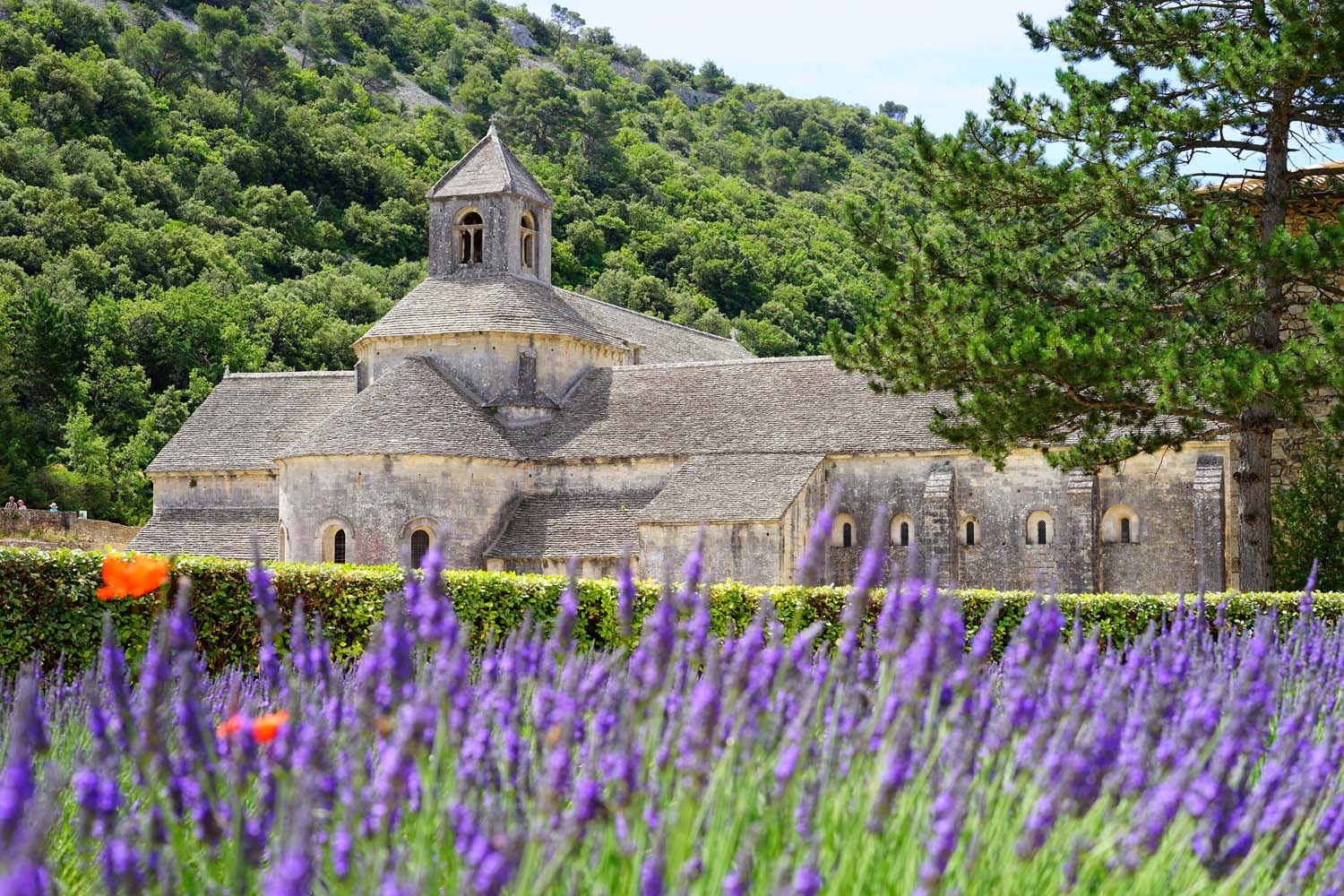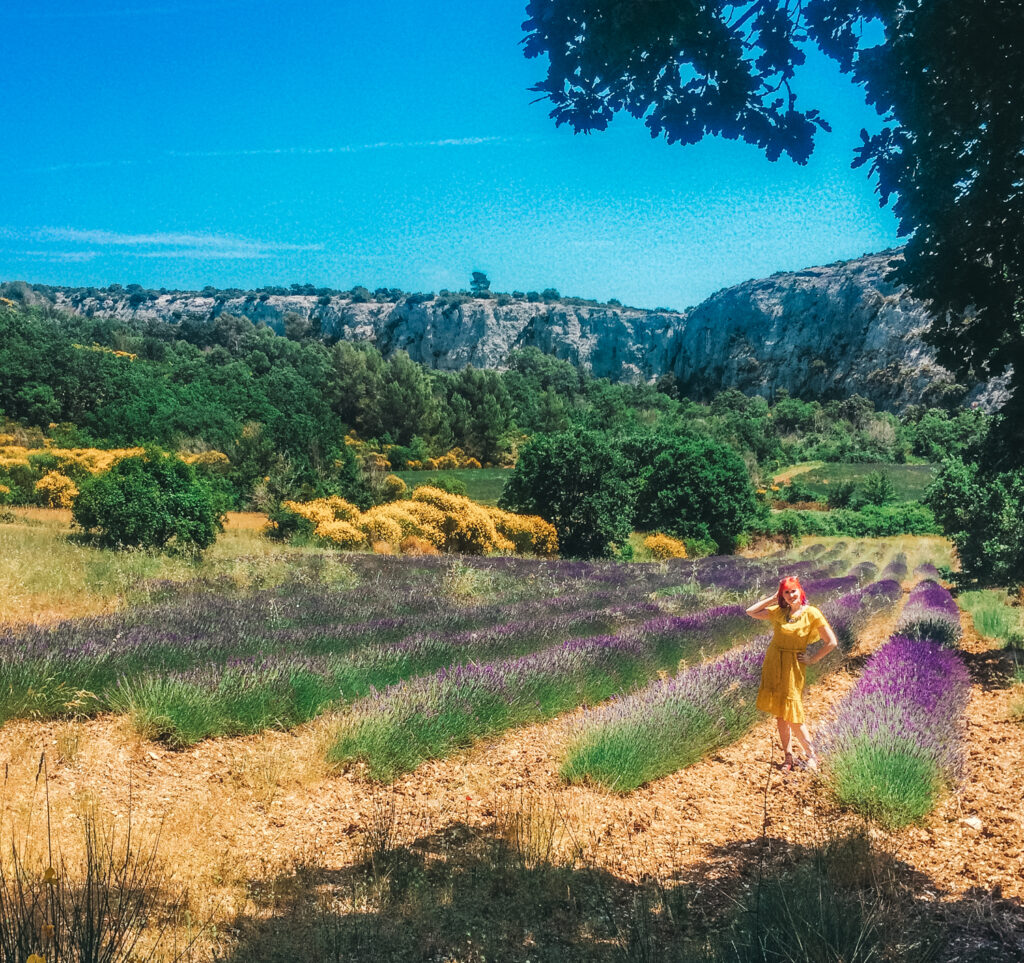

Without a doubt, there is no more popular time to visit Provence than when the sun-soaked fields are painted with brushstrokes of purple and green emanating from the massive ocean of lavender that bloom all across the valley. Driving along the hillsides with the windows down, you can smell the fields of lavender even before you can see them with your eyes. And what a sight they are when you finally see them appear. Driving along a Lavender Route in Provence is a spectacular way to see these beautiful fields that stretch out as far as the eye can see. Each one is framed perfectly under the watchful eye of the bright blue sun and the mountains far off in the distance.


Three different regions around Provence are known for their lavender-producing fields. These are the Valensole Plateau, Pays de Sault and the Luberon Valley. I always choose one area to make a day out to discover the magic of the magnificent lavender fields in Provence. Focusing on one specific region allows you to explore it to the fullest. Discover hidden corners and stop to relax and soak in the scenery.
The exact timing of the lavender bloom can vary slightly from year to year. Depending on weather conditions and other factors. It is always a good idea to check with local sources, such as local lavender farms or tourist information centers in the area, for the most up-to-date information on the lavender bloom.
The Lavender in the Luberon Valley is the first to bloom from June to early July. The exact timing of the lavender bloom can vary slightly from year to year, depending on weather conditions and other factors. It is always a good idea to check with local sources, such as local lavender farms or tourist information centers in the area, for the most up-to-date information on the lavender bloom in the Luberon Valley.
Because the Valensole Plateau is about 500 m above sea level, the lavender in this region typically blooms from mid-June to mid-July. However, it’s important to note that exact blooming times can vary slightly depending on weather conditions throughout the year. In 2023 there was a larger amount of rainfall in the area, delaying the blooms.
The Lavender in the Pays de Sault is the last to bloom during the summer lavender season. This is due to its high elevation. Generally, you can expect the lavender to begin to bloom in late July into August. But thanks to the Sault Lavender Festival, which takes place on August 15th, the stalks of lavender are never cut down before this date. A big part of the festival is the harvest competition. Locals compete against each other to collect the lavender using the original method of harvesting, which employs a sickle to cut down the stalks.
“Lavender” comes from the Latin “lavare,” meaning washing. Since ancient Antiquity, the Romans knew how powerful the lavender plant was. They used it for its medicinal properties and aromatic qualities, and especially for washing. But Lavender is not native to Provence. It was brought to the countryside by the Romans. The Romans knew that Provence’s dry, sunny climate and well-drained soils would be ideal for lavender growth. In the Middle Ages, lavender cultivation in Provence was primarily undertaken by monastic communities. Monks recognized the value of lavender for its therapeutic uses and began growing it in monastery gardens.
Over time, the cultivation of lavender expanded beyond monasteries. Farmers and locals started cultivating lavender on a larger scale. In the 19th century, the demand for lavender products, such as essential oil, perfume, and soaps, increased domestically and internationally. And lavender became one of the most important agricultural exports for the region. Distillation techniques improved, allowing for efficient processing of lavender crops. Today, lavender fields in Provence are an iconic symbol of the region, attracting tourists from all over the world.
Before entering lavender fields, remember to respect the farmers’ hard work and follow any posted guidelines. If there are any roped-off areas, avoid entering. They are there for a reason. But with so many different fields to visit, you will always find somewhere you can walk right into the fields to get those sprawling views. Remember to avoid stepping on the plants at all costs. This is how these farmers make a living, and you would hate to be responsible for damaging their crops.
Always be sure to walk only down the rows of lavender and not over them. And never pick the flowers. There are so many places around Provence to buy very inexpensive stalks of lavender; there is no need to pick them yourself in case you damage the plant by doing so. Plus, stalks of lavender must be dried to be preserved, so best to buy them after they have been left to dry.
During the summer, when the lavender blooms in Provence, it can be impossibly hot. So be sure to wear plenty of sunscreens and always bring a large, wide-brimmed hat to ensure you aren’t directly exposed to the sun. Especially in the fields, there is no shade to escape under, so you will always be in direct sunlight. As you walk around in the lavender fields, wear some sensible shoes. Sneakers or comfortable sandals are the best options for footwear.
Bring a nice, thick picnic blanket with you if you want to have a little picnic along the way. Most fields don’t have super soft ground, so having a good, thick base to sit on is a great idea to ensure you’re comfortable. Also, bring everything you’ll need for the picnic, from food and drinks to cutlery and napkins. And always make sure to leave your picnic spot exactly how you found it and bring all your garbage home with you. Be sure you bring plenty of water, more than you’ll think you need, for long days out in the sun.
To make the most of this photographic region of Provence, you’ll want to rent a car to get around. It’s advisable to book your rental car in advance, especially during peak travel seasons. When picking a rental car for your travels in Provence, I always air on the smaller side. Smaller cars are ideal for navigating narrow village streets. And some roads in Provence you might think are one lane only, but before you know it, you’ll discover they aren’t. And the smaller your car, the easier it is to scoot by. Just be sure to pack lightly to ensure you can fit all your luggage into the car.
Be sure to familiarize yourself with France’s road rules and driving customs. In France, you drive on the right side of the road. And remember that priority is given to vehicles coming from the right at intersections without traffic lights or signs. The roads in Provence have very strict speed limits. And there are hidden speed cameras even in small villages and dirty roads. And these speed cameras will fine you for going even 10km over the limit! These fines will be mailed to you back home, so there is so escaping them after your trip. So you should always keep an eye on these speed limits. Some cars come with a GPS system that will alert you to the change in speed limits. Or use Waze to help you get an alert when a speed camera is in effect.
Before stopping your car to get out and explore the fields, you’ll want to do so safely. You don’t want to stop your car in the middle of the road and block oncoming traffic. Trust me; there are many places to stop, so if you think you’re missing an opportunity, another will come any minute. Many lavender fields have come to expect tourists these days. And there will often be a patch of dirt where you can park your car, off to the side of the road, near the fields. Never ever park or drive your car right into the lavender plants field.
Lots of the lavender producers and shops have parking lots out front. You can explore the shops and then head back to see the fields beyond. When in villages, there are both free and paid parking options. Pay attention to parking signs to avoid any fines or penalties.
You have to expect to see a lot of people during the summer months. But arriving early in the morning or right at sunset will ensure you get as much of the field to yourself as possible. And remember, if you just turn your camera this way or that, it’s easy enough to get a shot without other people in it. Be kind to those around you; everyone is there for the same reason.
While renting a car and going at your own pace is always my recommendation, if you don’t want to drive yourself and instead just want to relax and be led by a guide, you have plenty of options. These guided tours stop off at producers and fields and combine your day trip with a visit to a famous neighbouring village.
When it comes to lavender, there are over 30 different species. But the two most popular you’ll find in Provence are Fine Lavender and Lavandine. While they both belong to the Lavandula genus, there are distinct differences in the characteristics, aroma, and cultivation of each plant.
Fine lavender (or Lavandula angustifolia) typically grows in compact, bushy formations, reaching around two-three feet. It showcases slender, linear leaves with a gray-green hue. Its slender and elongated flowers form tight spikes at the top of the stems. The blossoms display a lovely lavender-purple colour. This flower offers a delicate, sweet, and floral fragrance. Its scent is often soothing, calming, and reminiscent of the quintessential lavender aroma.
Lavandine (or Lavandula x intermedia) is a much larger plant, often growing up to three-four feet tall. Its flowers are shorter and fuller than Fine Lavender, forming dense and rounded flower spikes. The colour of the blossoms can range from lavender-purple to bluish-purple. Lavandine exhibits a more intense fragrance compared to Fine Lavender. Its scent carries a sharper, medicinal note with hints of camphor (woody scent), making it suitable for various aromatherapy applications. Lavandine also typically blooms a bit later than Fine Lavender.
French cuisine is one of the coziest delights to savour in winter. With its hearty…
During the festive season, Paris becomes a sparkling holiday dream, with twinkling fairy lights cascading…
When it comes to Christmas shopping, Paris is pure magic—a city where elegance meets holiday…
There’s nothing quite like Paris at Christmastime—the City of Light transforms into a glittering wonderland,…
There’s something undeniably magical about Paris at Christmas. Sure, the City of Light is enchanting…
Perched on the southern shores of Ireland lies the town of Kinsale, one of the…
This website uses cookies.